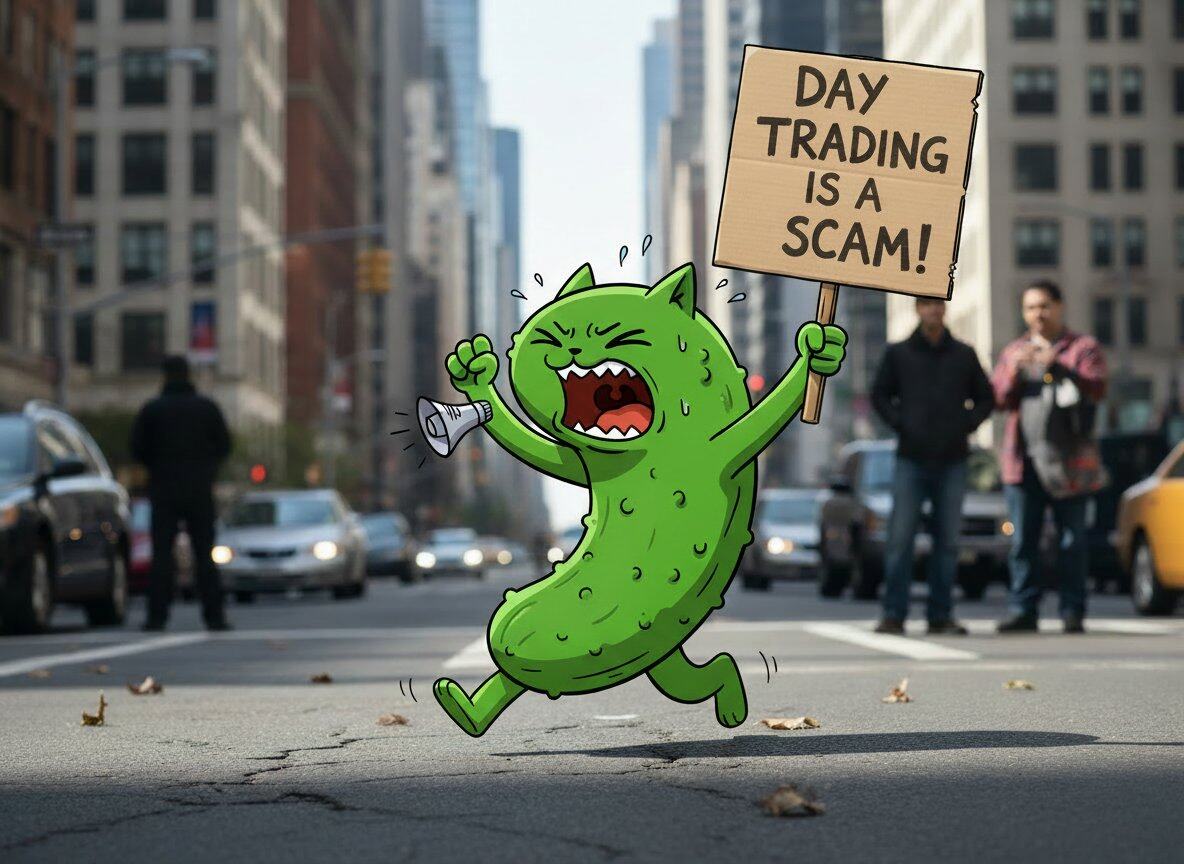Crypto mania and the jackpot paradox: When risk appetite devours human rationality
Original author: thiccy
Original translation: Block unicorn
This article explores the shift in risk appetite from mania to the worship of the jackpot, and its wider social implications. It involves some simple math, but it’s worth reading.
Imagine you are playing a coin tossing game. How many times do you toss it?
At first glance, this game looks like a money-printing machine. The expected return on each coin toss is 20% of your net worth, so in theory you should be able to toss the coin an infinite number of times and eventually accumulate all the wealth in the world.
However, if we simulate 25,000 people each flipping a coin 1,000 times, almost everyone will end up with a result close to $0.
The reason almost all outcomes tend toward zero is because of the multiplicative nature of repeated coin tosses. Although the expected value of the game (i.e., the arithmetic mean) is a 20% increase in payoff with each coin toss, the geometric mean is negative, meaning that in the long run, coin tosses actually compound negatively.
What's going on? Here's an intuitive explanation:
The arithmetic mean measures the average wealth created across all possible outcomes. In our coin-flipping game, the wealth is highly skewed toward the rare jackpot scenario. The geometric mean measures the wealth you can expect from the intermediate outcomes.
The simulation above shows this difference. Almost all paths asymptote to zero. In this game, you need to toss 570 heads and 430 tails to break even. After 1,000 coin tosses, all of the expected value is concentrated in the jackpot outcome of just 0.0001%, the rare occurrence of a large number of heads.
The difference between the arithmetic mean and the geometric mean constitutes what I call the "jackpot paradox." Physicists call it the "ergodicity problem," and traders call it "volatility drag." When expected value is hidden in the rare jackpot, you can't always rely on it. The risk of over-pursuing the jackpot turns the positive expected value straight to zero. In the world of compound returns, the dose makes the difference.
Cryptocurrency culture in the early 2000s is a vivid example of the jackpot paradox. SBF (Sam Bankman-Fried) once opened up a discussion about wealth preferences in a tweet.
Logarithmic wealth preference: Each dollar is worth less than the previous dollar, and as wealth grows, your risk appetite shrinks.
Linear Wealth Preference: Every dollar is worth the same, regardless of how much you’ve already earned, and your risk appetite remains the same.
SBF proudly proclaims his linear wealth preference. He argues that since his goal is to give away all of his wealth, doubling from $10 billion to $20 billion is just as important as going from $0 to $10 billion, so making the big, risky bet is logically worthwhile from a civilizational perspective.
Su Zhu of Three Arrows Capital echoed this linear wealth preference and further proposed an exponential wealth preference.
Exponential wealth preference: Each dollar of new wealth is more valuable than the last, so as your wealth grows, you increase your risk appetite and are happy to pay a premium for the jackpot.
Here is how the three wealth preferences correspond to the coin-flipping game above.
Given our understanding of the jackpot paradox, it is obvious that SBF and Three Arrows were, in a sense, flipping a coin infinitely. This mentality is how they built their wealth in the first place. Likewise, it is unsurprising and obvious in hindsight that both SBF and Three Arrows lost $10 billion in wealth. Perhaps in some distant parallel universe, they are billionaires, which might justify the risks they took.
These plunges aren’t just cautionary tales about the mathematics of risk management; they’re also reflections of a deeper macrocultural shift toward a preference for linear or even exponential wealth.
Founders are expected to adopt a linear wealth mindset, take huge risks, and maximize expected value because they are cogs in the venture capital machine that relies on power-law distributions for success. The stories of Elon Musk, Jeff Bezos, and Mark Zuckerberg who risked everything and ended up with the world’s largest personal wealth reinforce the myths that drive the entire venture capital industry, while survivorship bias cleverly ignores the millions of founders who have lost everything. Only the elite few who can cross the increasingly steep power-law threshold can be saved.
This appetite for ultra-high risk has seeped into everyday culture. Wage growth has severely lagged behind the compounding of capital, leading ordinary people to increasingly view jackpots with negative expected values as their best chance for true upward mobility. Online gambling, zero-day expiration options, retail meme stocks, sports betting, and crypto meme coins are all testaments to the exponential growth of wealth preferences. Technology makes speculation effortless, and social media spreads every new story of overnight wealth, drawing a wider range of people into a huge losing gamble like a moth to a flame.
We are becoming a culture that worships the big prize, and the value of survival is increasingly reduced to zero.
AI exacerbates this trend, further devaluing labor and exacerbating the winner-take-all situation. Techno-optimists dream of a post-GAAI world of plenty where humans devote their time to art and leisure, but this looks more like billions of people chasing negative capital and status "jackpots" with UBI stipends. Or maybe the "up and up" e/acc logo should be redrawn to reflect the countless paths to zero along the way, which is the true contour of the "jackpot era".
In its most extreme form, capitalism behaves like a collectivist hive. The mathematics of the jackpot paradox suggests that it is rational for a civilization to treat humans as interchangeable labor, sacrificing millions of worker bees to maximize the linear expected value of the entire hive. This may be most efficient for aggregate growth, but it severely distributes purpose and meaning.
Marc Andreessen’s techno-optimist manifesto warns: “Humans are not meant to be kept in captivity; they are meant to be useful, productive, and proud.”
Yet the rapid pace of technological change and the shift in incentives for increasingly radical risk-taking are driving us toward precisely the outcome he warned about. In the “age of the jackpot,” the impetus for economic growth comes at the expense of our fellow citizens. Utility, productivity, and pride are increasingly reserved for a privileged few who win out over the competition. We have raised the average at the expense of the median, leading to a growing gap in mobility, status, and dignity that breeds a culture of negative sums across the economy. The resulting externalities manifest themselves in social unrest, starting with the election of demagogues and ending with violent revolutions, which can exact a huge toll on the compounding growth of civilization.
As someone who makes a living trading the cryptocurrency markets, I’ve witnessed firsthand the degradation and desperation that comes with a cultural shift. Like the jackpot simulation, my wins are built on the failures of a thousand other traders. It’s a monument to wasted human potential.
When industry insiders ask me for trading advice, I almost always see the same pattern. They are all taking too much risk and losing too much. There is usually a scarcity mentality, a lingering feeling of being “left behind,” and a urge to make a quick profit.
My answer is always the same: accumulate more edge rather than increasing risk. Don’t destroy yourself chasing the jackpot. Logarithmic wealth is what matters. Maximize the 50% outcome. Create your own luck.
Avoid big drawdowns. You will get there eventually.
But most people will never be able to gain an advantage consistently. “Win more often” is not a scalable proposition. In the rat race of techno-feudalism, meaning and purpose will always go to the winner. Which brings us back to the question of meaning. Perhaps what we need is a new religious revival that reconciles ancient spiritual teachings with the realities of modern technology.
Christianity spread because it promised that anyone could be saved. Buddhism spread because it believed that anyone could be enlightened.
A modern, similar system must do the same thing, providing dignity, purpose, and a path forward for all people so that they do not destroy themselves in the pursuit of the grand prize.



